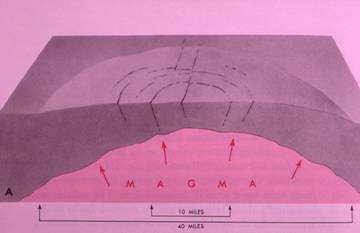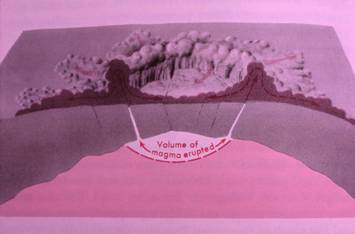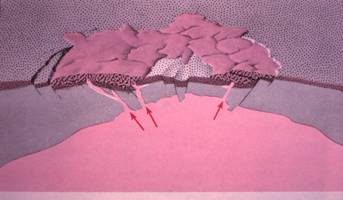
|
Lobby > Exhibits > Why Geysers Erupt > Underlying Geology > Yellowstone Fireworks Yellowstone FireworksThe caldera-forming eruptions in the Yellowstone area occurred when molten rock and gases accumulated at shallow levels beneath the ground. 
As the magma chamber expanded, it lifted up the surface of the Earth. This upward pressure cracked the overlying rock, forming faults and triggering earthquakes. Eventually, the faults tapped into the magma chamber, allowing magma to ooze into the cracks and releasing pressure within the chamber. The trapped gases expanded rapidly and a massive volcanic eruption occurred. Fountains of rock and volcanic ash stormed into the sky, traveling hundreds of miles per hour, and then pelted down to form welded tuff. Superhot pyroclastic flows (hot ash, rocks, and pumice) moved at great speeds across the landscape, while gases and finer ash were swept high into the atmosphere. As the magma chamber emptied, the roof of land above it collapsed, forming an large crater called a caldera. Smaller eruptions continued for thousands of years between each major eruption, releasing lava which paved over the floor of the caldera. Eventually the lava cooled and hardened into an igneous rock called rhyolite. Next Section: Branded by a Volcano |
|
||||||||||||||||||||||||||||||




